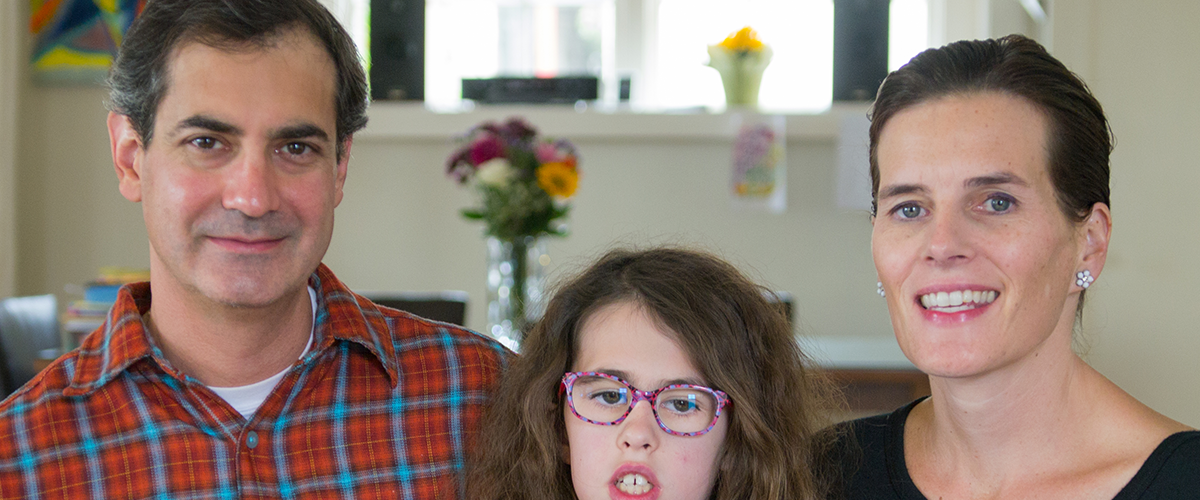To support our commitment to research, MDF awards fellowship grants to postdoctoral researchers as part of our annual Fund-A-Fellow (FAF) program. We recently caught up with one of our current grant recipients, Dr. Nicholas Johnson, Assistant Professor of Neurology at the University of Utah.
Dr. Johnson was inspired to focus his practice and research on myotonic dystrophy after working for five years at the University of Rochester with Dr. Chad Heatwole, Dr. Richard Moxley, Dr. Charles Thornton and a number of other clinicians and researchers leading the charge to find new treatments and cure for DM. He opened his practice at the University of Utah in July of 2013 and is excited to be able to treat the large DM population in Utah and surrounding states.
“There is an excellent neurology department at the University of Utah,” Dr. Johnson says, “but previously no one was focused specifically on researching DM. Being here gives me the opportunity not only to provide ongoing treatment to those individuals, but to include many of them in our research studies as well, which is exciting.”
We spoke with Dr. Johnson about his current FAF research.
MDF: First, tell us about the research you’ve been doing as a result of receiving the FAF grant.
NJ: “Sure. Once I received the FAFA grant, I began a project in March 2012 to develop a tool that can be used in a clinic or in research studies to measure how myotonic dystrophy impacts the quality of life of a child with congenital or childhood-onset DM.
“The tool is called Congenital and Childhood Myotonic Dystrophy Health Index or CCMDHI. It’s a survey-based tool that collects data about quality of life from birth to age 18. Until now, there’s been very little data about how DM progresses from birth to adulthood, but that information is necessary for clinical trials to move forward.”
MDF: Can you tell us about the survey and what you’ve discovered in the two years that you’ve been conducting research?
NJ: “We interviewed 32 children and 12 parents and created the survey with their direct quotes so we could compare how their symptoms might impact the larger DM population’s quality of life. The survey was then sent out via the Myotonic Dystrophy Family Registry, the National Registry for DM and FSHD at Rochester, and the Canadian Neuromuscular Disease Registry, as well as via Dr. Anne-Berit Ekstrom of Sweden, who takes care of a large population of Swedish patients with congenital or childhood DM.
“One of the salient discoveries was that there was more than expected cardiac issues reported in children when we asked parents about comorbidities. Another interesting result was that 20-30% reported ADHD or autism symptoms.
“Of children over 18 years old, 86% were unemployed, which is pretty significant and tells us that there are a lot of ongoing issues and we need to emphasize social support when we take care of these patients. Communication problems are a huge issue. Reports of fatigue and difficulty with mobility were also reported.
“Importantly, reported symptoms seemed to vary between birth and age 18 and over. Issues for those with young children were very different from those with older teenage children. And all children were very different from the experience of adult onset DM. Parents reported significantly more communication problems, as well as emotional and social issues. On the upside, there were less myotonia and pain symptoms in the children.”
MDF: What happens next?
NJ: “Now that we have a preliminary instrument, we’re finishing testing and will be moving on to our next study. I’ll be working with a research team here at the University of Utah on a study called ‘Health Endpoints and Longitudinal Progression in Congenital Myotonic Dystrophy’ or HELP CDM.
“This study, which is funded by MDA, is expected to start in January 2014 and will validate CCMDHI while helping find other endpoints that will be important in clinical trials.
“During the study, children from birth to 13 years old will come in for a variety of testing, including strength and functional testing, speech and swallow testing, neuropsychological testing, and respiratory and cardiac testing. Sixty children with congenital DM, who are currently being treated here at the University of Utah and also at and University of Western Ontario, will be measured. Ultimately, we hope this will allow us to transition to successful trials and therapies for the pediatric population.
“Separately, we’ve partnered with MDF to send out a survey via the Myotonic Dystrophy Family Registry to see how women with DM are affected during pregnancy and whether symptoms improve or worsen. That survey will be going out soon. Previously, researchers have looked at complications that can occur during pregnancy but not how quality of life is impacted as a result.”
MDF: You’ve mentioned the national DM registries a few times. Can you speak to why it’s important to join these registries?
NJ: “The Myotonic Dystrophy Family Registry established by MDF and the National Registry for Myotonic Dystrophy at the University of Rochester have been instrumental in recruiting patients for our upcoming HELP CDM study. I mentioned that we’re also using these registries to conduct a number of surveys that will provide us with data we need to keep research moving forward. I encourage everyone to sign up, if they haven’t already. It really does make a difference.”
12/18/2013

